Turkey feathers can make gorgeous home decor when dyed in vibrant colors. Their natural patterns and textures lend beautifully to an array of dye techniques. With a few simple steps and items from your kitchen, you can transform plain turkey feathers into works of art for your home.
Dyeing feathers is an enjoyable DIY project that allows you to customize colors. You can match existing decor, create ombre effects, or just experiment with different shades. Dyed feathers are lovely arranged in vases, turned into wreaths, or used as ornamental touches around the home. Follow this beginner’s guide to learn how to dye feathers any color you desire.
Supplies Needed
Dyeing turkey feathers is a thrifty project using common household items. Here’s what you’ll need:
- Turkey feathers – source them yourself or purchase online
- Food dye, liquid or gel
- Vinegar or citrus juice
- Glass or metal containers for dye baths
- Spoon for mixing and stirring
- Rubber gloves and apron
Any smooth, intact turkey feathers will work well, including wing and tail feathers. Avoid very small, fluffy feathers as they won’t hold dye as effectively.
Preparing the Feathers
Before dyeing, the feathers need a bit of prep:
-
Wash feathers gently with mild soap and water to remove dirt and oils. Allow to fully dry.
-
Use tweezers to remove any remaining feather shafts, leaving just the feather vane
-
Lay feathers in a single layer on paper towels until ready to dye.
Washing the feathers pre-dye allows the dye to penetrate and adhere better, Make sure feathers are completely dry before dyeing; any moisture will dilute the dye bath,
Mixing the Dye Bath
For easy at-home dyeing, food coloring is ideal. Here are a few tips for mixing your dye bath:
-
Use glass, stainless steel, or enameled metal containers. Food dye can stain plastic.
-
Fill container with at least 8 cups very hot water per 1 teaspoon of food dye. The dye concentrate should not exceed 1% of the total volume.
-
Add 2 tablespoons white vinegar or citrus juice per cup of water for better dye absorption.
-
Add several drops food dye and stir to evenly distribute. Go darker than your desired shade; the color will lighten slightly when dry.
-
For mixed colors, add dye colors separately instead of premixing to have more control.
Dyeing the Feathers
Once your dye bath is prepared, dyeing the feathers takes just a few minutes.
-
Wearing gloves, fully submerge feathers in the dye bath, gently squeezing out air bubbles trapped between feather barbs.
-
Allow feathers to soak for 5-15 minutes maximum, checking color regularly. Feathers are porous and absorb dye quickly.
-
Remove feathers when your ideal shade is reached; you can always make the color darker with a fresh dye bath but you can’t undo over-dyeing.
-
Rinse thoroughly in cool water until water runs clear. Use a vinegar rinse if needed to remove excess dye.
-
Blot feathers dry with paper towels or air dry fully before using. The color may deepen slightly upon drying.
Try dyeing feathers in graduated shades by removing them from the dye bath at different times. Or, leave some feathers natural along with dyed ones for an organic look.
Dyeing Precautions
Take these precautions when dyeing with food coloring:
-
Work in a well-ventilated area; some may find the vinegar fumes strong.
-
Wear an apron and gloves to avoid stains on clothes and skin.
-
Clean up spills immediately to avoid permanent stains.
-
Store excess dyed feathers in plastic to avoid color bleed.
-
Food dye will wash out of clothing/surfaces, but it is always best to take precautions.
Using Your Dyed Feathers
Once your newly hued feathers are completely dry, you’re ready to display these gorgeous home accents. Some fun ways to use dyed feathers:
-
Arrange in vases or pots around the home. Layer colors and textures for interest.
-
Make DIY feather wreaths and wall hangings. Hot glue feathers onto wreath forms or payers of burlap.
-
Embellish lampshades, candles, and other decor by gluing on small feather tufts.
-
Fill bowls or jars with feathers to create striking tabletop arrangements.
-
For holidays, dye feathers in relevant colors – red and green for Christmas, pastels for Easter, orange and black for Halloween.
Let your creativity run wild when dreaming up ways to show off your hand-dyed feathers. The colors and natural beauty of turkey feathers make them endlessly versatile for home decor projects. With such simple dyeing techniques, you can create customized feather accents to match any style and space.
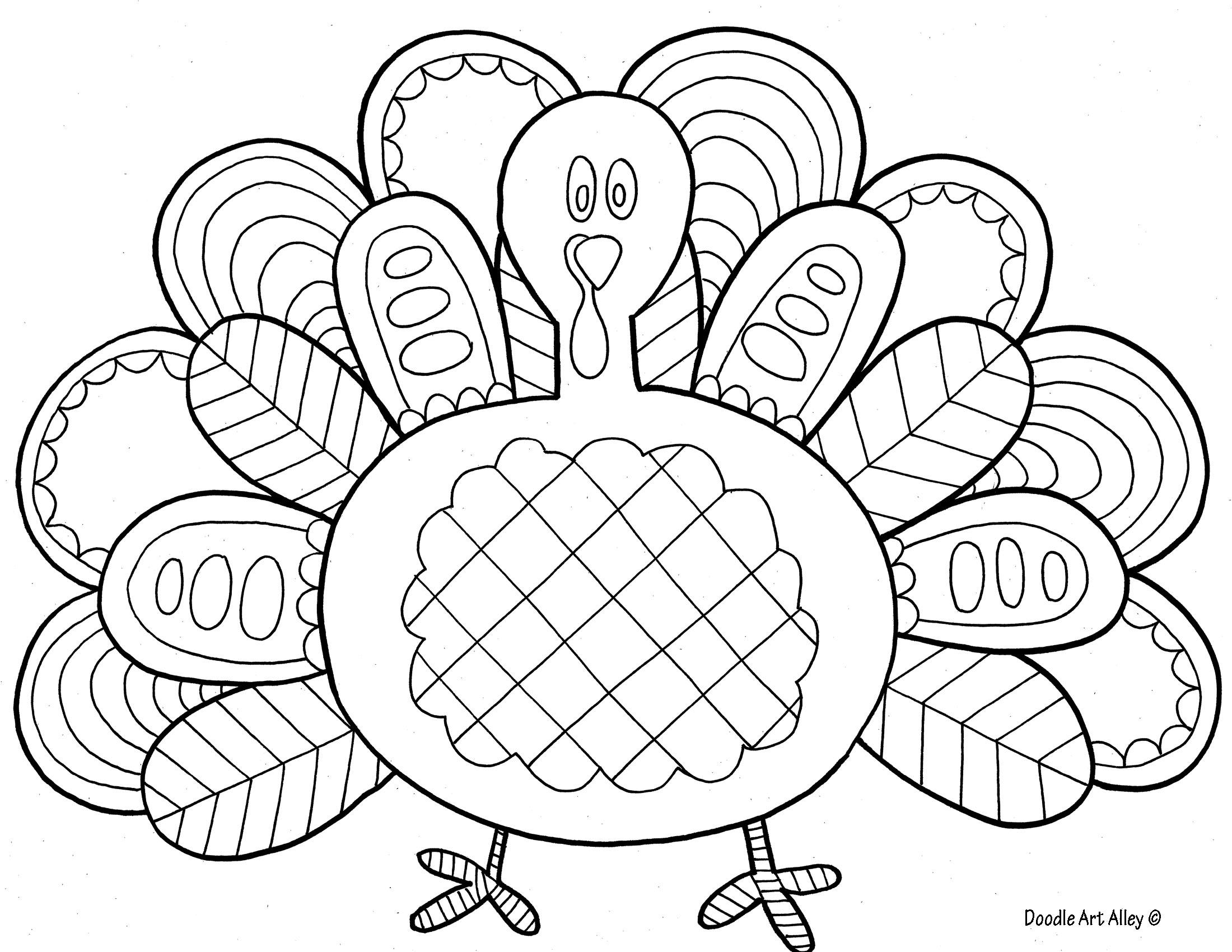
Free Turkey Coloring Pages
Our turkey coloring pages are hand drawn and digitally designed just for you! We’ve created them with your students in mind, giving them lots of opportunity to color and and add unique designs to these fun and festive turkeys.
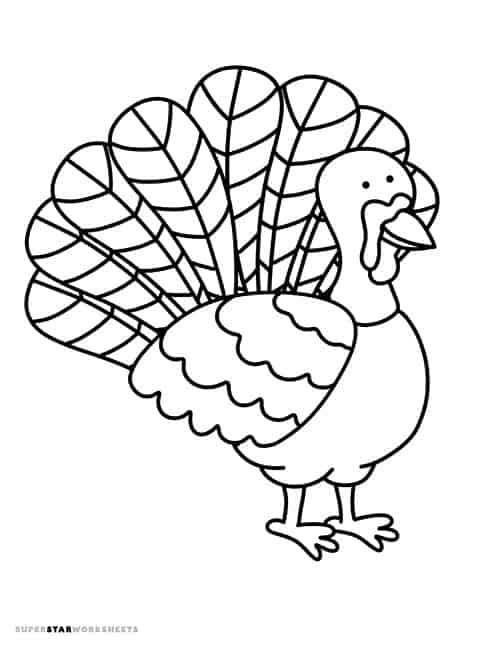
This festive printable turkey coloring page features a standing turkey with a display of feathers for students to color in.
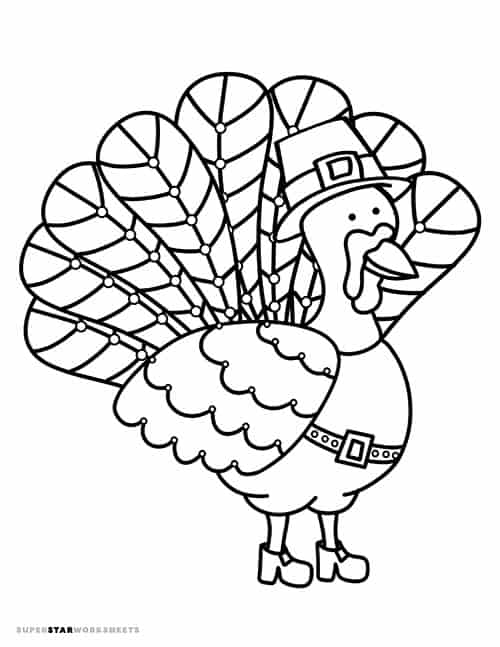
Another festive turkey all dressed up for Thanksgiving holiday. This turkey is great to color and add to Thanksgiing cards and crafts.
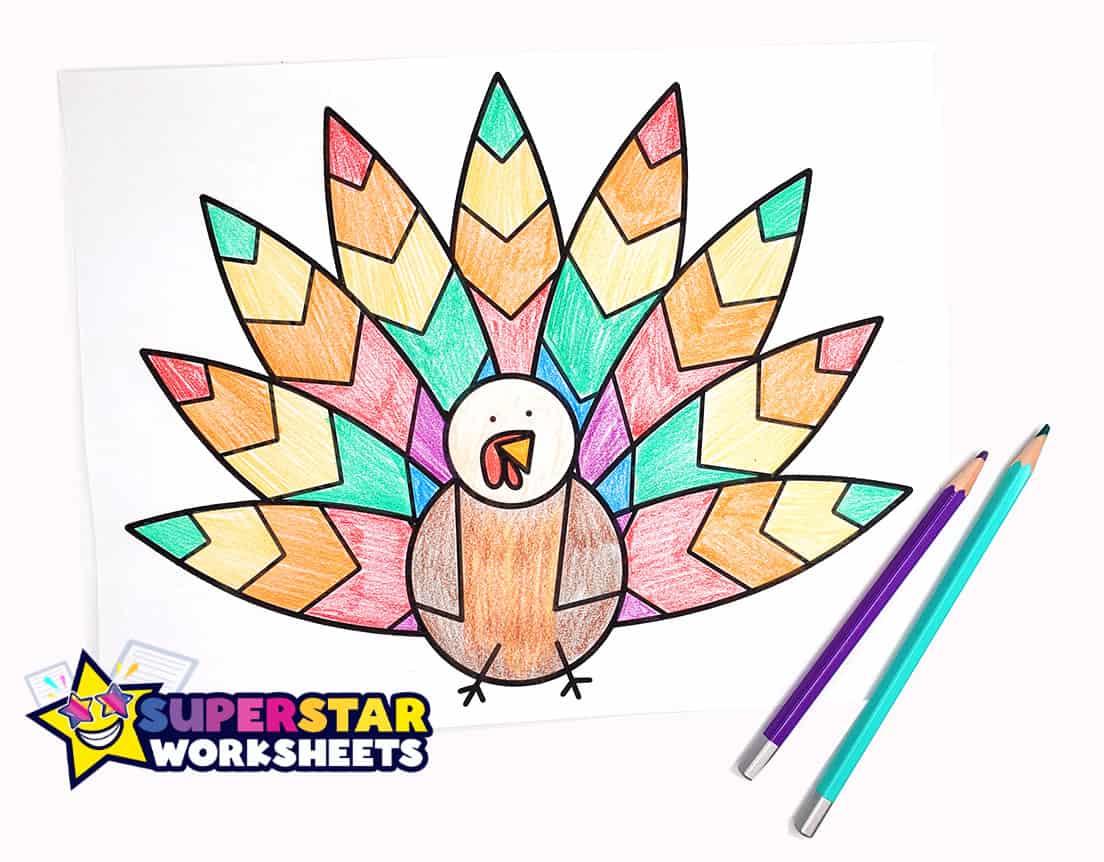
Funny Turkey Coloring Pages
These silly turkeys will add a little character to your Turkey Day activities! Not only are they fun and engaging to color in, but they can easily be used as story starters and writing prompts for a Disguise a Turkey project, or a simple How Turkey escaped Thanksgiving story.
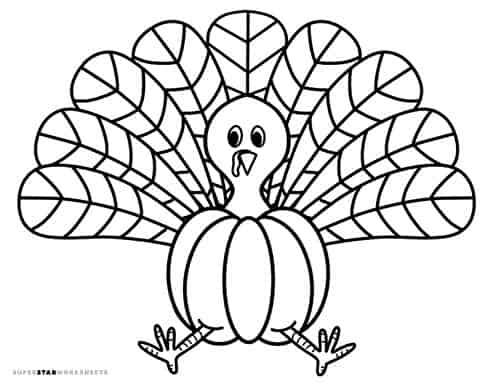
This silly turkey has gotten himself stuck inside a pumpkin! This cute turkey coloring page is great for elementary students, or to use as a writing prompt for older students….you might ask them, “How did the turkey get stuck in the pumpkin?”
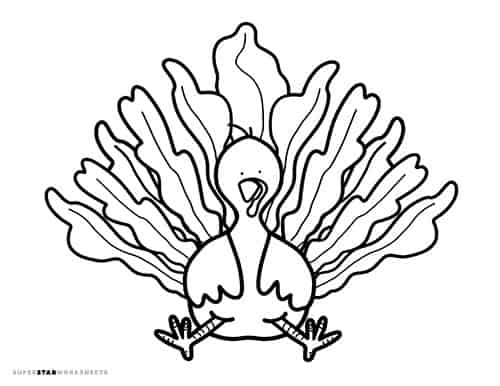
This cartoon turkey is fun, whimsical, and has a ruffled feather modern look to him. He’ll make simple printable Thanksgiving decorations or a fun addition to the front of your Thanksgiving name cards.
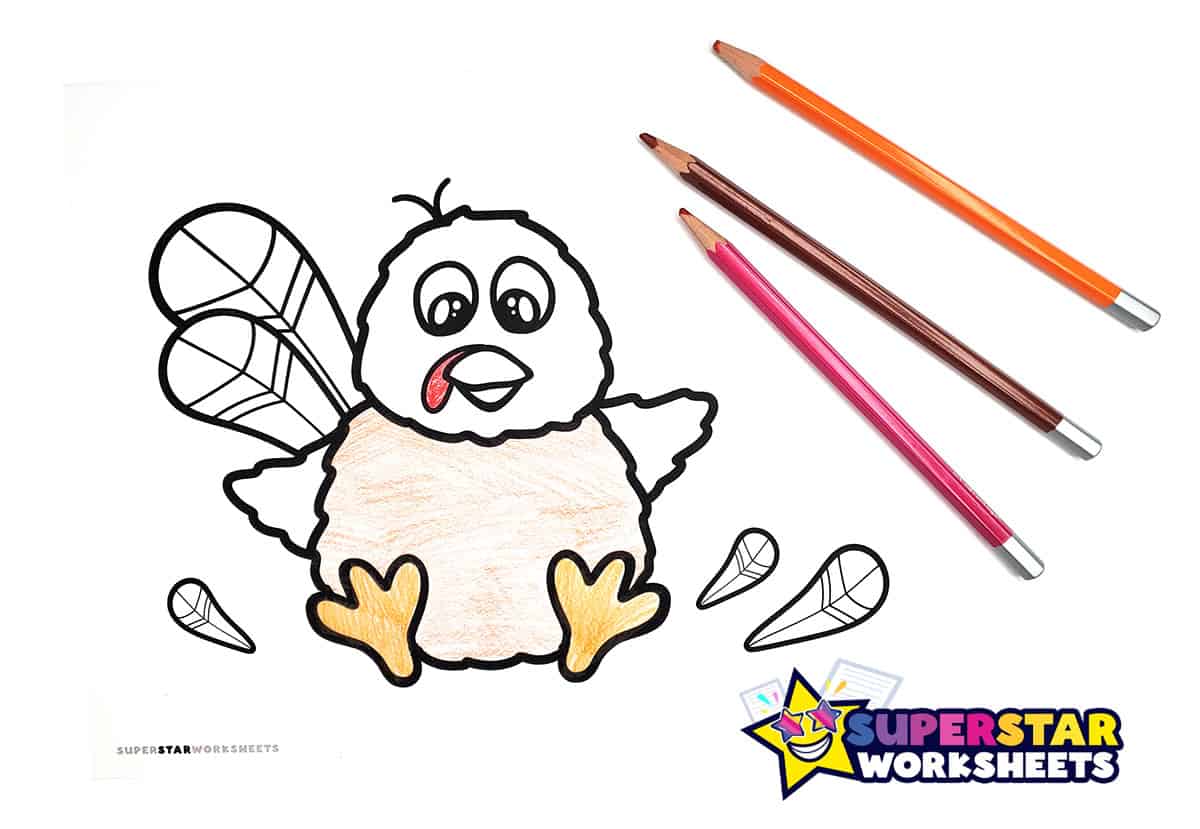
How To Draw A Funny Turkey
FAQ
How can turkeys change color?
What colors can turkeys be?
How to tell turkeys apart?
How do you make a Turkey bounce?
When a hole is punched at the top and string added, the youngsters can make the turkeys “bounce” along on their accordion-style legs. Feast your eyes on these free printable and downloadable turkey coloring pages, which are sure to bring an explosion of colors to your holiday celebrations!
How do you make turkey hats fit in a classroom?
All the children need for this engaging classroom activity are turkey coloring pages, ordinary party hats, and some pipe cleaners. When the coloring pages are finished, they should be glued to the outer surface of the party hats. They can be trimmed however necessary to make them fit.
How to make bouncy turkey legs?
This enjoyable craft is surprisingly easy and starts with the youngsters cutting strips of brown construction paper and folding them accordion style to create bouncy turkey legs. When their turkeys are colored, glued to cardboard, and cut out, the bouncy legs should be attached to the bottom of the cutouts.
